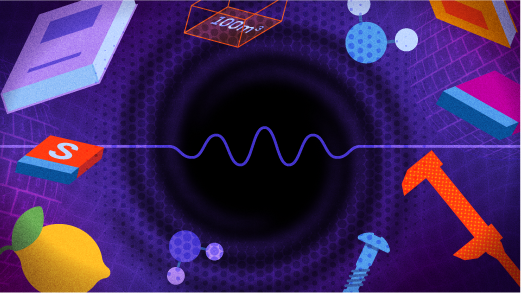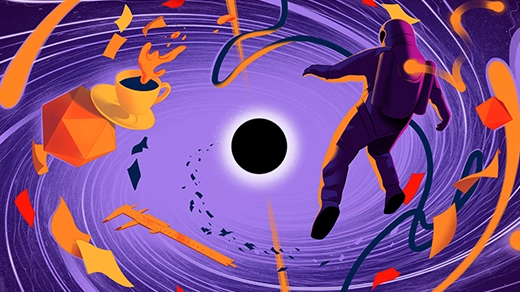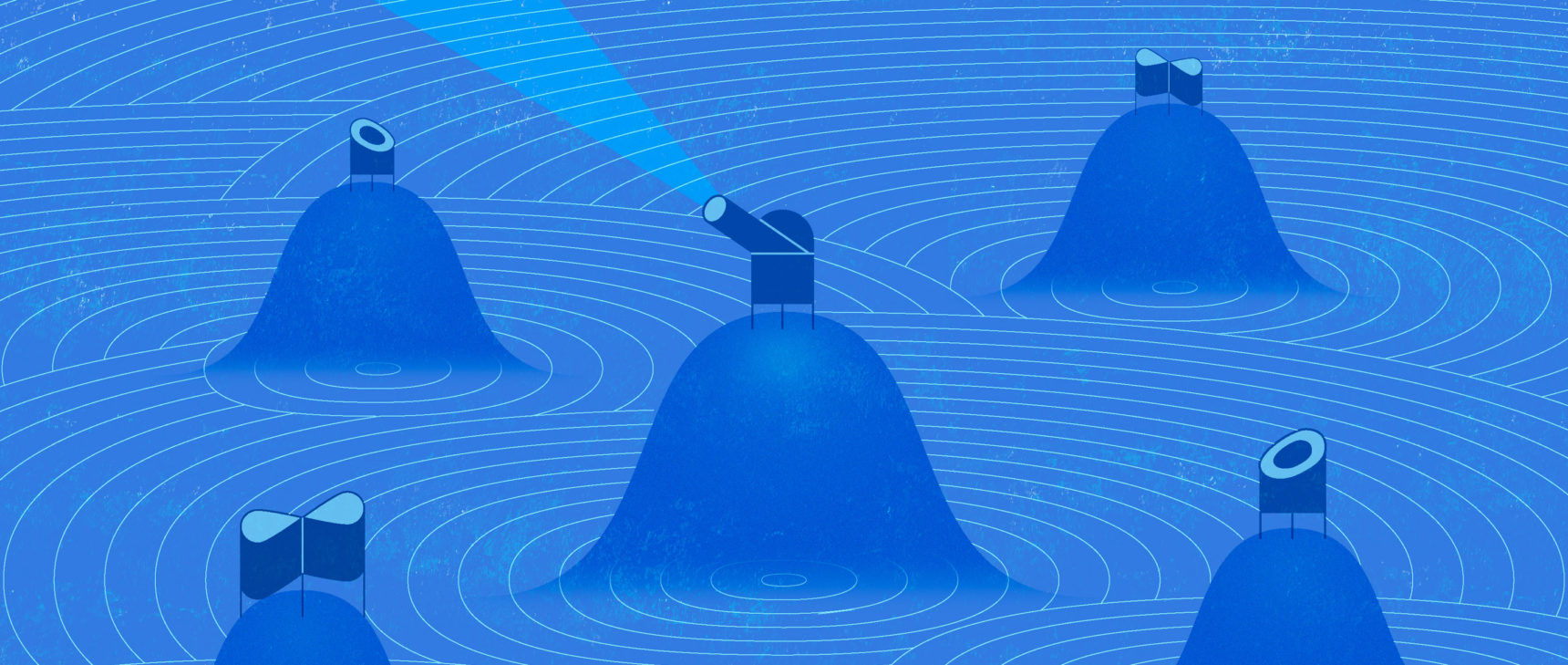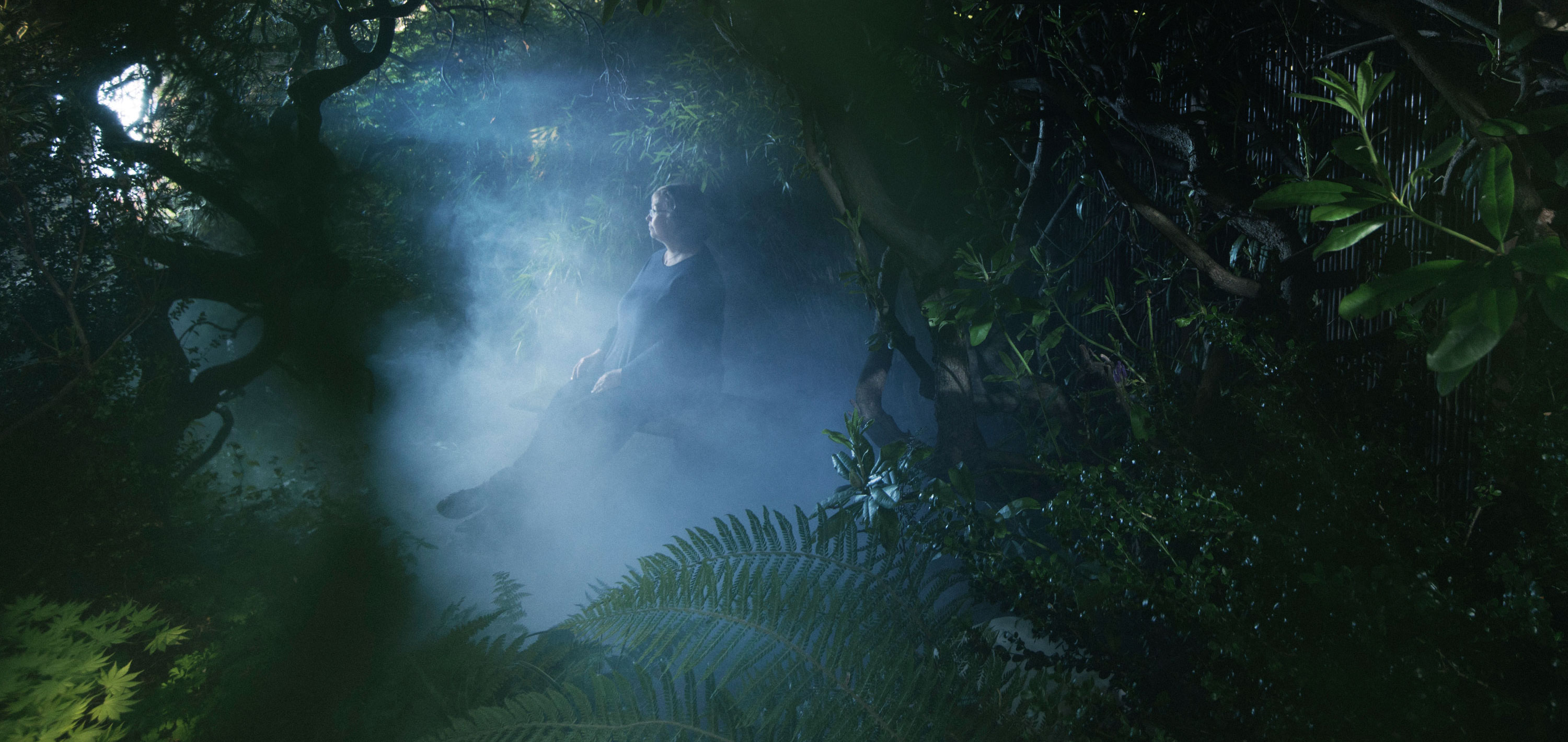
The astrobiologist Victoria Meadows in her backyard in Seattle.
Kiliii Yüyan for Quanta Magazine
Introduction
On a standard quarter-acre lot in Seattle, the astrobiologist Victoria Meadows has nurtured an Eden of apple and plum trees, blueberry bushes, strawberry undergrowth, a pair of 80-foot-tall western red cedars too big to hug, groves of Japanese maples and an alien-looking cycad tree. Lilac bushes mingle scents with a 30-foot climbing rose trained over an arch. Bamboo borders a reflecting pool. Beds of dill, borage, tarragon, shiso and chives, a pool house doubling as an orchid hothouse and ferns fill the spaces between. It was here, surrounded by lush photosynthesizers, that Meadows wrote some of her best work on the telltale signatures of oxygen and other atmospheric gases that would indicate alien life on a faraway planet.
“Being in nature kind of drops you into a different state of thinking,” said Meadows, who heads NASA’s Virtual Planetary Laboratory and has been awarded the 2018 Drake Award for her contributions to the search for extraterrestrial life.
More plants, and photos of them, fill her office at the University of Washington, where she is a professor, and where a third of the 85-person team comprising the Virtual Planetary Laboratory is located. Meadows works there often, but prefers her garden.
In mid-May, a bank of 15-foot rhododendrons along one side of her house was bursting magenta, portending one of her favorite things: “In another couple of weeks they’ll start dropping their blooms,” she said, “and I end up with a garden path that’s completely and utterly covered with flowers.”
Meadows and her team seek to identify signs of alien life in distant planets’ atmospheres. Starting with the planned launch of the James Webb Space Telescope in 2020, telescopes will be powerful enough to observe the skies of rocky planets orbiting other stars. As a planet passes in front of its star, dips in the spectrum of the starlight will reveal which light-absorbing gases are present in its atmosphere. Scientists are currently debating which planets James Webb should focus on (current favorites are three planets in the habitable zone of the star TRAPPIST-1, discovered in 2015, but that could change as the newly launched TESS telescope begins to make discoveries). Meadows leads the effort to determine which “biosignature” gases to look for, and how to interpret them when they’re seen.
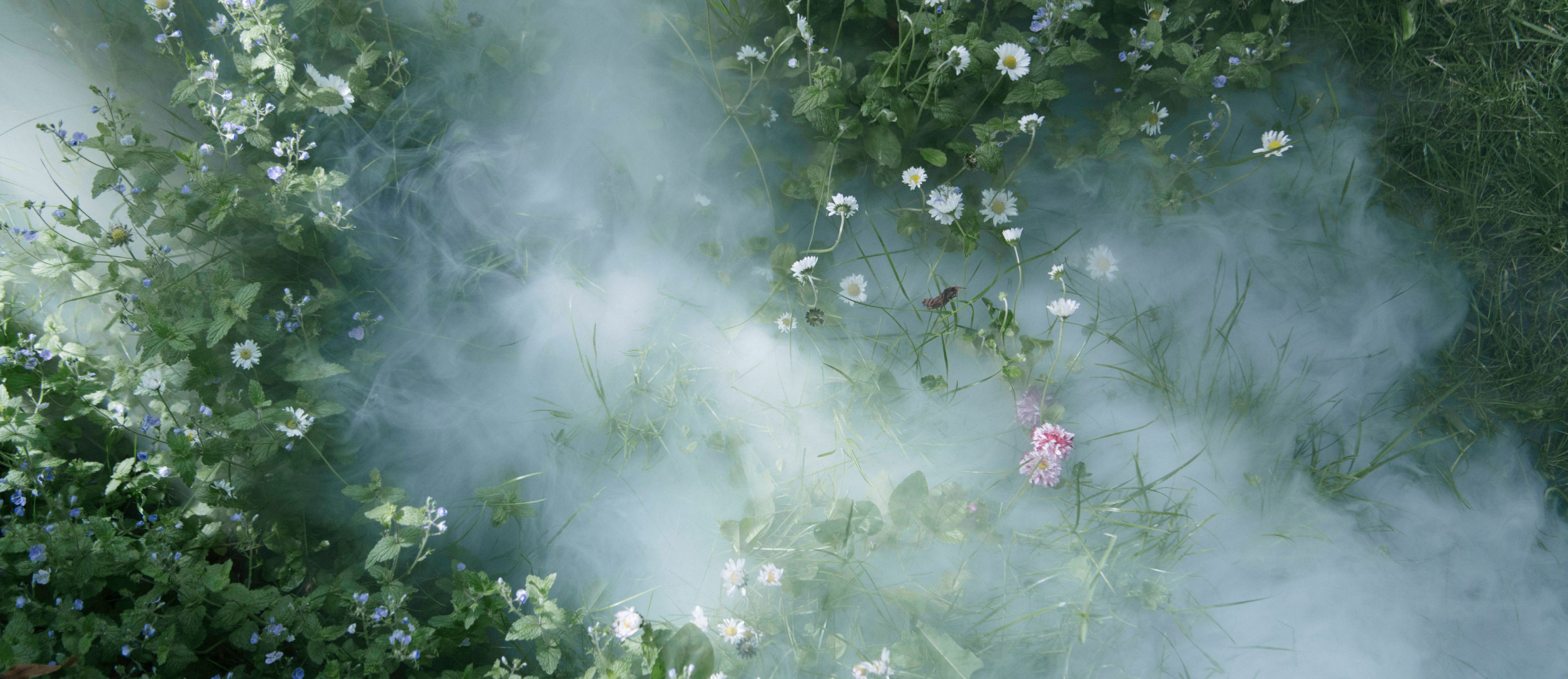
The photographer Kiliii Yüyan used a fog machine to highlight the presence of atmospheric gases, which Meadows studies as possible signatures of life on distant planets.
Kiliii Yüyan for Quanta Magazine
The most obvious target will be oxygen, which is produced by plants during photosynthesis, a simple process for harnessing solar energy that astrobiologists deem likely to evolve in alien environments just as it quickly arose on Earth. However, in the past few years, Meadows and her team have discovered several nonbiological processes that could flood alien skies with oxygen, mimicking the presence of life. In an influential paper that she wrote mostly from a hammock in her garden over the summer of 2016, she systematically enumerated these “false positives” and explained how planetary contexts and the presence of other signature gases, such as methane, ozone and tetraoxygen, could be used to distinguish these cases from photosynthetic alien biospheres.
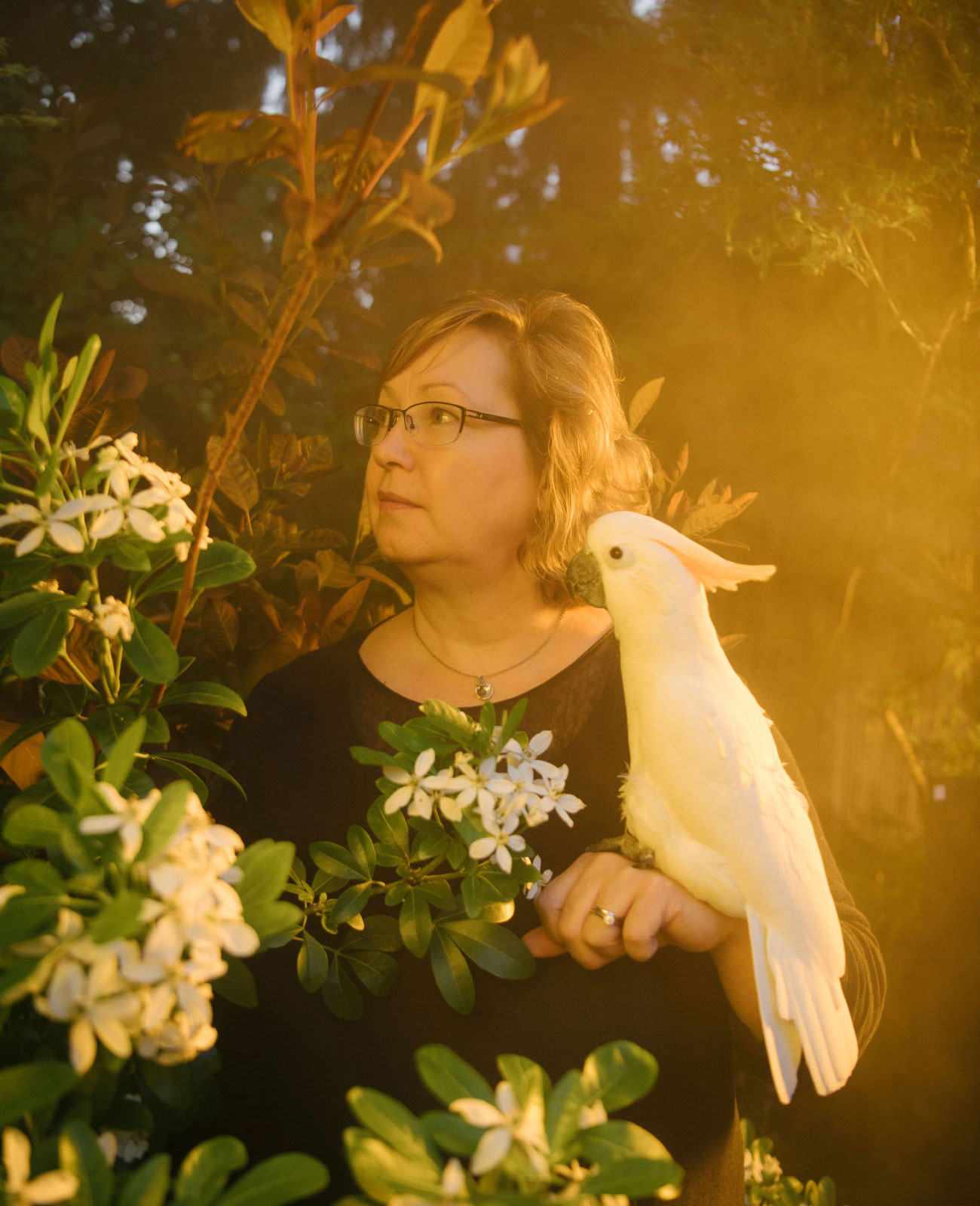
Meadows with Cirrus, her pet cockatoo.
Kiliii Yüyan for Quanta Magazine
Meadows was drawn to astronomy and biochemistry as a teenager in Australia. At about the same time, she started growing plants on a special table with a drainage system that her father built in her bedroom. When she decided to pursue astronomy, pulled that way by Carl Sagan’s Cosmos series, she hopped from Sydney to the Jet Propulsion Laboratory in Pasadena, California, and from one rental property to the next, never with a garden of her own. Finally, in 2007, several years after she established VPL as a NASA research team, she and her husband bought their house in Seattle, where they literally started setting down roots. The cedars were, of course, already there. “When I bought the property I couldn’t believe that I would be allowed to own trees that old and big; it seemed wrong somehow,” Meadows said.
In her garden, she escapes the constant phone calls, office visitors and Slack messages of VPL life. “I can go there and have a quiet think,” she said. “The other thing is the gardening itself, which gives me a chance to both think and not think, depending on what I want to do.” She can either focus on a problem she’s working on, or “just zone out or have a break from thinking, which is really important for replenishing yourself and not getting burnt out.” She’ll sometimes bring out Cirrus, her 20-year-old cockatoo, who says “up!” when he wants to be handled, or sometimes “up; cuddle!”
Meadows will accept the Drake Award from the SETI Institute at a ceremony on June 14, becoming the first female recipient. She said she’s pleased to have “come full circle,” joining her original loves of astronomy, biochemistry and plants by studying oxygen as a biosignature gas. “I love photosynthesizers,” she said. “I mean, who wouldn’t? We wouldn’t be here without them.”
This article was reprinted on TheAtlantic.com.

